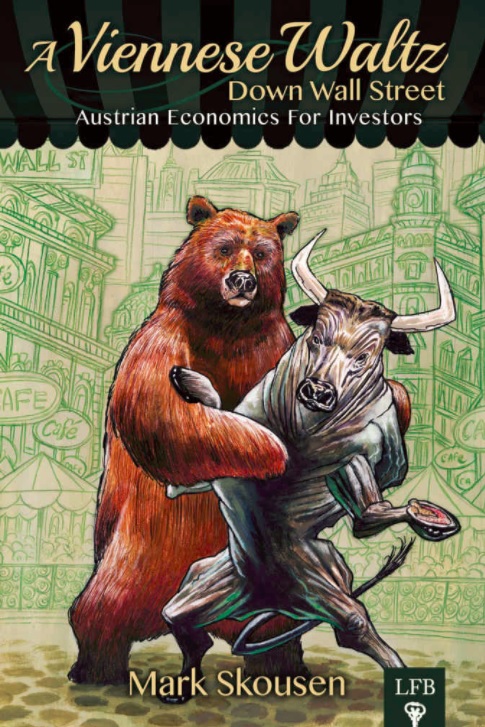“Housing prices have been roaring higher at a speed rarely seen in American history.” — Robert Shiller 2018
In Sunday’s New York Times, Yale University professor and Nobel Prize winner Robert Shiller warned us that we are entering another dangerous real estate bubble, the third biggest boom in recent history.
The three biggest real estate bull markets are:
— 1942-1947, average housing prices rose 60%.
— 1997-2006, average housing prices increased 74%.
— 2012-2018, average housing prices moved up 40%.
And it’s possible that housing prices could go higher. As Shiller warns, “We are, once again, experiencing one of the greatest housing booms in United States history.”
Gradually rising interest rates have slowed down the real-estate boom. Housing starts are off, and housing stocks have fallen sharply. This may be the first sign that the housing market is in trouble again.
Is this a bubble that could burst and cause another financial crisis?
The Dangers of Cheap Money
Interestingly, all three of the real estate bubbles were accompanied by long periods of artificially low interest rates. The 1942-47 episode occurred during World War II, when the Treasury and the Federal Reserve kept long-term rates at 1%. After the war, the pent-up demand for housing took off.
In the 1997-2006 episode, the unprecedented real estate bubble was created by a dangerous elixir of easy money by the Federal Reserve (short-term interest rates were 1% in 2004); the government encouraging home ownership by those who couldn’t afford it (subprime and no-documentation loans); and Wall Street’s creative mortgage-backed securities sold to institutions and investors in the United States and around the world.
The inevitable collapse caused a worldwide panic and a financial crisis in 2007-09.
The latest situation is similar to 1997-2006, although not as extreme. Most commercial banks and mortgage companies have learned their lesson and don’t make subprime loans anymore.
But the federal government still encourages extreme leverage in some mortgages. The Federal Housing Administration (FHA) allows qualified home buyers to put down only 3.5%; the FHA is now the largest mortgage insurer in the world with an active insurance portfolio of $1.3 trillion!
Plus, the Fed has maintained extremely low interest rates, as low as 0%, since the financial crisis of 2008-09.
Enter the Austrians
According to the Austrian theory of the business cycle, as espoused by Ludwig von Mises and Friedrich Hayek (see my book, “A Viennese Waltz Down Wall Street: Austrian Economics for Investors” — for details on ordering at a discount, see below), easy-money policies create an artificial inflationary boom in long-term assets (bonds, stocks and real estate) that is not sustainable.
An artificial boom eventually must turn into a bust. It is usually not as bad as it was in 2007-09, but it is a danger.
My strategy is to profit from both the bull and bear markets in the business cycle. We’ve profited handsomely from the bull market on Wall Street but must be cautious and more conservative as we enter 2019.
Know the signs of the times!
Order ‘A Viennese Waltz Down Wall Street’ at a Special Discount

My book, “A Viennese Waltz Down Wall Street: Austrian Economics for Investors,” is written for the intelligent layman who wants to know more about Austrian economics and the answer to questions such as:
— How can you improve your chances of forecasting the future?
— Are gold and silver good inflation hedges?
— Can the Austrian theory of the business cycle improve your skill in identifying the tops and bottoms of markets?
— Who predicted the crashes in 1929, 1987 and 2008?
The book is 256 pages long and normally retails for $25 but is available in quality paperback for only $20 postpaid by calling Harold at Ensign Publishing, toll-free: 1-866-254-2057. (Call for the additional cost of mailing outside of the United States.)
Good investing, AEIOU,
![]()
Mark Skousen
You Blew It!
DIET COKE MAY ACTUALLY INCREASE WEIGHT AND YOUR CHANCES OF GETTING DIABETES
“Artificially sweetened food and drink are now linked to a tendency to develop the very disorders they were designed to prevent.” — Israeli Study
A new portrait hangs in the White House. It’s called “The Republican Club,” showing Republican presidents relaxing around a table drinking and socializing. Everyone is happy, smiling and handsome.
What is President Trump drinking? He’s fond of Diet Coke.
Soda drinks have loads of sugar, which is bad enough, but artificial sweeteners in the “diet” sodas are particularly bad for you. Soda manufacturers claim that these drinks help you avoid Type 2 Diabetes and even lose weight, but a recent study by Weizmann Institute of Science in Israel (published in the journal “Nature” in September 2014) suggests just the opposite.
After reviewing these studies, Andrew Weil, M.D. states in part:
“You will be much better off not drinking any sodas at all. The results of the [Israeli] study connecting artificial sweeteners with metabolic syndrome, a collection of conditions that together dramatically increase the risk of heart disease, stroke and diabetes, by no means vindicate sugar. Instead, they suggest that artificial sweeteners are as bad for health as too much sugar.
“The Israeli study strongly suggests that the use of artificial sweeteners has been contributing to the worldwide obesity epidemic and rising rates of type 2 diabetes.
“These results aren’t the final word on the effect of artificial sweeteners, but they do suggest that these chemicals aren’t doing us any good. As the Israeli team leader noted, rather than protecting us from obesity, metabolic syndrome and diabetes, artificially sweetened food and drink are now linked to a tendency to develop “the very disorders they were designed to prevent. We’ve known for some time that the more artificially sweetened food and drink we consume, the fatter we get.”
Me? I prefer to drink water, or sparkling water.



![[instant messaging via tablets and phones]](https://www.stockinvestor.com/wp-content/uploads/shutterstock_125411345.jpg)
